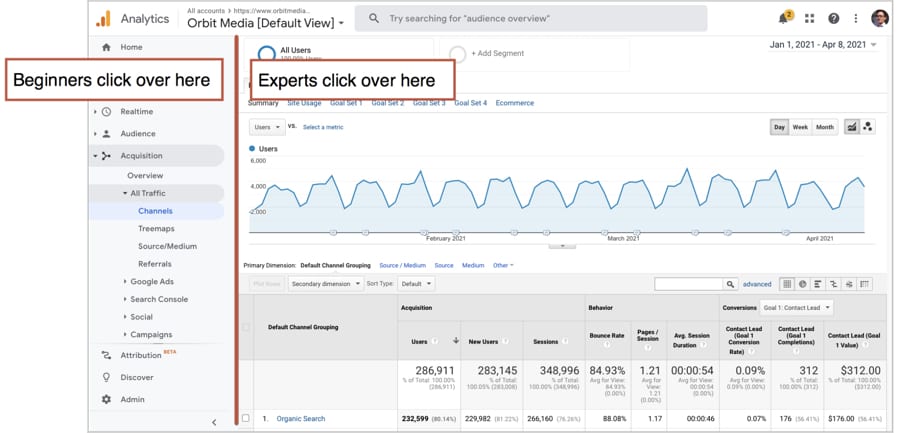Maximize Your Web Site Performance With Google Analytics Tracking Code
In the digital landscape, recognizing customer communications with your website is crucial for optimization. By incorporating the Google Analytics tracking code, you can unlock a wide range of information regarding site visitor behavior, allowing you to monitor necessary metrics and identify possible areas for enhancement. This strategic application not just informs your choices yet also leads the way for a much more interesting user experience. Nevertheless, the actual difficulty exists in effectively examining this data and equating understandings into workable techniques. What actions can you require to ensure you are totally leveraging these insights for ideal efficiency?
Recognizing Google Analytics
Understanding Google Analytics is vital for web site proprietors and online marketers aiming to enhance their on the internet visibility. This effective device gives critical insights right into user habits, enabling stakeholders to make data-driven decisions. By tracking different metrics, such as web page views, bounce rates, and individual demographics, Google Analytics helps recognize which elements of a site are carrying out well and which call for renovation.
One of the vital attributes of Google Analytics is its capability to segment information. Customers can examine traffic resources, customer involvement, and conversion rates across various sections, such as geographical places or device kinds. This granularity allows marketing experts to tailor their strategies to details target markets, thereby boosting the efficiency of their campaigns.

Establishing Tracking Code
To harness the full capacity of Google Analytics, setting up the monitoring code properly is a fundamental action. The tracking code, a snippet of JavaScript, makes it possible for Google Analytics to gather data regarding user communications on your site. To start, log in to your Google Analytics account and browse to the Admin section. Under the Home column, select "Monitoring Info" and after that "Monitoring Code." Below, you will locate your special tracking ID, which starts with "UA-" followed by a collection of numbers.
Following, you'll require to embed this code into the HTML of your web site. Preferably, place the monitoring code right before the closing tag on every page you desire to keep track of. Take into consideration making use of plugins that facilitate easy combination. if you're making use of a material monitoring system (CMS) like WordPress.
After implementing the code, it's vital to validate its capability. Utilize the "Real-Time" reports in Google Analytics to confirm that data is being gathered as expected. By making certain correct setup, you create a solid foundation for efficient data analysis and calculated decision-making to boost your website's efficiency.
Trick Metrics to Monitor
Frequently checking vital metrics in Google Analytics is essential for evaluating your site's performance and user engagement. Amongst the basic metrics to track are web page sights, which supply insight into how typically individuals go to different pages on you could check here your site. Additionally, unique visitors aid you recognize the reach of your web content by suggesting the number of distinct customers are involving with your website over an offered duration.
Bounce rate is another critical metric, exposing the percentage of site visitors who leave your website after checking out only one page. A high bounce price may signal concerns with content relevance or customer experience. On the other browse this site hand, session duration shows how much time visitors remain on your site, helping you assess material performance and individual interest.
Conversion prices are important for gauging the success of your web site in achieving certain goals, such as type submissions or item purchases (when does the google analytics tracking code send an event hit to analytics?). Checking traffic resources is also vital, as it assists recognize which channels drive one of the most traffic and conversions, permitting even more targeted marketing methods
Analyzing Visitor Actions

Additionally, tracking user paths with the site helps expose usual navigation patterns. This info is vital in determining whether individuals can quickly find the content they seek or if they come across obstacles that lead to aggravation. Recognizing high exit pages can highlight areas that may require redesign or more interesting material to preserve visitors.
Additionally, segmenting users based upon demographics, interests, and actions supplies a deeper understanding of the target market. This segmentation allows businesses to customize web content and check my blog advertising and marketing strategies better, raising the likelihood of conversions. Ultimately, evaluating visitor actions not just notifies site improvements however also fosters an extra user-centric approach, causing improved satisfaction and commitment in time.
Carrying Out Data-Driven Adjustments
Carrying out data-driven changes is vital for improving web site efficiency and accomplishing company objectives. By leveraging understandings gathered from Google Analytics, organizations can determine areas for improvement and make educated choices to maximize customer experience.
First, analyze crucial performance indications (KPIs) such as bounce rates, session period, and conversion rates to pinpoint certain problems influencing customer engagement - when does the google analytics tracking code send an event hit to analytics?. As an example, a high bounce price on a landing web page might indicate that the web content is not reverberating with site visitors or that the page takes too lengthy to load

Final Thought
In final thought, the application of Google Analytics tracking code is crucial for optimizing site performance. By accurately keeping an eye on customer habits and crucial metrics, useful understandings can be gotten, assisting in data-driven decision-making.
By tracking different metrics, such as web page sights, bounce rates, and individual demographics, Google Analytics helps determine which elements of a site are doing well and which need improvement.
Users can assess website traffic resources, customer involvement, and conversion prices across various sectors, such as geographical locations or tool kinds. The tracking code, a fragment of JavaScript, makes it possible for Google Analytics to gather data about customer communications on your website.On a regular basis keeping an eye on essential metrics in Google Analytics is essential for analyzing your web site's performance and customer engagement. By leveraging Google Analytics, internet site owners can gain useful insights right into how customers connect with their site.